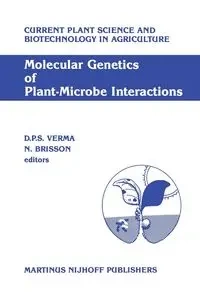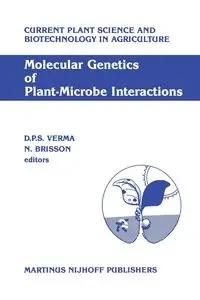Molecular Genetics of Plant-Microbe Interactions - Verma Desh Pal S
Molecular Genetics of Plant-Microbe Interactions - Verma Desh Pal S
- Proceedings of the Third International Symposium on the Molecular Genetics of Plant-Microbe Associations, Montréal, Québec, Canada, July 27-31, 1986
EAN: 9789401084963
Marka
Symbol
620HGQ03527KS
Rok wydania
2011
Strony
376
Oprawa
Miekka
Format
15.6x23.4cm
Redakcja
Verma Desh Pal S
Język
angielski

Bez ryzyka
14 dni na łatwy zwrot

Szeroki asortyment
ponad milion pozycji

Niskie ceny i rabaty
nawet do 50% każdego dnia
Niepotwierdzona zakupem
Ocena: /5
Marka
Symbol
620HGQ03527KS
Kod producenta
9789401084963
Rok wydania
2011
Strony
376
Oprawa
Miekka
Format
15.6x23.4cm
Redakcja
Verma Desh Pal S
Język
angielski

Increased interest in the basic biology of plants and microorganisms stems from the fact that crop productivity is directly affected by plant-microbe interactions. In spite of the fact that plants exist in the
environment amongst diverse species of microorganisms, only a few ever establish a direct relationship. Emerging awareness concerning the indirect effect of microbial association on plant growth and the possibility of using
one microbe against another for controlling pathogenic interactions is at the genesis of new fields of studies. The primary reason for a microbe to associate with· photoautotrophic organisms (plants) is to tap its nutritional
requirements, fixed carbon, as a source of energy. By hook or by crook, a microbe must survive. Some have evolved mechanisms to exploit plants to develop a niche for their biotropic demands. When in contact with a living
plant, microorganisms may live in a passive association using exudates from the plant, invade it pathogenically or coexist with it in symbiosis. The plant responds to the interloper, either reacting in a hypersensitive manner
to contain the invasion of pathogens, or by inducing a set of genes that leads toward symbiosis, or by simply succumbing to the invader. Thus, prior to contact wi th the plant, mic roorganism is able to sense the presence of
the host and activate accordingly a set of genes required for the forthcoming interaction, whether symbiotic or pathogenic.
EAN: 9789401084963
EAN: 9789401084963
Niepotwierdzona zakupem
Ocena: /5
Zapytaj o produkt
Niepotwierdzona zakupem
Ocena: /5
Napisz swoją opinię

